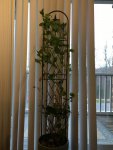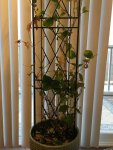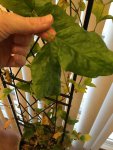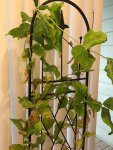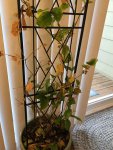Jasmine/RHS Gardening
https://www.rhs.org.uk/advice/profile?PID=291
Cultivation notes. All jasmines need a fertile, well-drained soil in full or partial sun. Summer jasmine needs a sheltered spot, full sun and a south- or south west-facing aspect. Winter jasmine is more tolerant of partial shade and a south east or north west aspect.
Curly leaves
Leaf Curls in Jasmine | Home Guides | SF Gate
homeguides.sfgate.com › Garden › Pest Control
Although hardy plants, jasmine leaves can begin to curl when suffering from disease or pests. Roots. Jasmine plants can suffer from root rot if the soil doesn't drain properly. Leaf Fungi. Several types of fungus can find a home on jasmine's leaves, causing them to curl and discolor. Pests. Treatments.
Have a look to see if there are any bugs please.
Why are the leaves falling off my jasmine plant?
This can cause
leaves to dry up and
fall off. Too much water can be just as bad for your
plant. ... The difference in this instance is that the
leaves will turn yellow before
dropping off, much like tree
leaves changing colors before
falling. Lack of light can be another cause of
jasmine plants losing
leaves.
I don't think you need to put the plant behind the blinds as that spot looks not very bright. I have no idea when you took the photo though.
It might be a good idea to use a bit of cotton wool to clean the front and back of the leaves, look for scales or bugs and you can top up you soil with sand if there are bugs. Bugs don't like cool sand, but love moist and warm compost. See if you can disentangle the stems and layer one of them. That way, you might have another stem providing nutrients to the plant or a new plant if the mother plant dies. When's the last time you topped up or changed the compost please?


